#buda monuments
Photo

stalin’s boots
#hungary#magyaroszag#budapest#buda#baross gabor telep#balatoni ut#memento park#communist relic#stalin#boots#monument
96 notes
·
View notes
Text

Today's Flickr photo with the most hits: Trinity Square, Buda Castle, Budapest, Hungary.
1 note
·
View note
Text

The Fisherman’s Bastion is, in all likelihood, one of the most visited attractions in Budapest. This is the place where locals and tourists come to enjoy the city views. But what is the history of Halaszbastya? Why is the bastion so decorative rather than defensive as bastions are? First let’s see the quick facts in the short history, and then the extended version for those who want to learn more.
The Fisherman's Bastion was built between 1895 and 1902 as part of the series of developments that were to celebrate the 1000th birthday of the Hungarian state. Consequently, the Bastion was inspired by the architectural style of the early medieval times (Neo-Romanesque) approx. the year 1000, when the first Hungarian king started his rule. What is more, the 7 towers of the Halaszbastya features the 7 Hungarian chieftains who had led their tribes to the present day Hungary to settle down in 895, and the Statue of St Stephen (1906), the first Hungarian king (1000-1038). In short, it is a historical monument for the millennial Hungary.
The architect of the Halaszbastya is Frigyes Schulek, who also restored and redesigned the Matthias Church (Church of Our Lady). The construction of the Fisherman’s Bastion is intertwined with the restoration of the church: its historical architectural style was also picked to suit the church redesigned in a later medieval style (Neo-Gothic). The T shaped Bastion arrangement was to embrace the church while enhancing its beauty, and also to connect the Castle hilltop with the Danube side settlement, Fishtown aka Watertown.
The bastion was built as a viewing terrace with lookout towers on the base of a stretch of the castle walls (from the 17-18th century, built after the Buda Castle Siege). Rather than building sturdy thick stone walls, the intention was to present the locals with a communal panorama terrace, as the Buda Castle was no longer considered to be a military place. The romantic notion was to recall the old times, so Halaszbastya is often likened to a castle prop, which does not feel real. It was meant to be like a fairy tale, feel like history rather than be history. The ceremonial, wide stairs leading up to the Fishermen’s Bastion provide a dramatic entrance to the Castle Hill attractions and to the views of the Pest side sights. The stairway features further historical statues, from bottom to top: the Statue of John Hunyadi, the statue of St George Piercing the Dragon (the replica of the 15th century statue in Prague made by medieval Hungarian masters, the Kolozsvari Brothers), and the 10th century soldiers guarding the gate (at the top of the stairs, under the arch).
The Bastion was damaged in WW2, but soon restored by the son of the architect. By the 1980s, the walls of the Bastion became grey due to the household fumes, and urban air pollution. Also, many of the statues were in neglect (losing limbs, crumbling face, etc.). Thank to the Castle District municipality – urging the state and the capital to contribute to the enormous restoration costs – Halaszbastya is fully restored now.
7 notes
·
View notes
Photo

Monument to the 100th anniversary of the unification of Pest-Buda by sculptor István Kiss, Budapest, 1976. From the Budapest Municipal Photography Company archive.
105 notes
·
View notes
Text
Einstand - Statement 18490312
Statement of Maria Vaszoly Né, regarding her involvement in the Hungarian Revolution of 1848-49, and the oddities encountered there. Original statement written sometime in the second half of 1849, and delivered to London via mail. Statement retrieved from the personal letter collection of Jonah Magnus. Printed transcript made in 1997.
---
Dearest Jonah.
I pray to the Lord above that this letter finds you well, and that it finds you at all. I also pray that in the slim chance that it does, you may be able to read it, for tremblements haunt my limbs. The winter is only starting to soften, and I am not welcome anywhere, not anymore.
There is no explanation in Heaven or Hell for what happened to me, for it has been such a series of preposterous happenings that not even the greatest hero would believe them. So I came to you, Jonah. You have a mind like no other, I have read your letters to my husband and back, it can wrap around such wondrous and complicated things. There must be something in that library of yours that speaks of the horrors I have endured. I desperately need you to tell me I am anything but alone in my experiences. I would rather be told I am mad, than that I am the one lone soul who must live through this.
I can barely recall how it started. The human mind is such a strange thing, isn’t it? It can get used to any kind of torture, if only it exists in it for long enough. It fools you to keep you alive, a horrific thing the mind is.
I had no part in starting the revolutions last year. Especially if the habsburgs ask. None at all, in fact I believed it was better to let things remain as they have been. You know I do not fancy the habsburgs, no more than anyone on these streets, but were we really in a state to complain? We weren’t. And regardless, we did. I had no part, but you know how the youth of Pesth is, they read their poems and sing their speeches, climb up onto monuments and struggle until the whole city can see them. And when you do see them, you fall enamoured and amazed, and the next thing you know, you’re being dragged along, shouting and chanting.
It was through several instances of being dragged along, that I ended up part of the regiment, which was set on claiming the Castle of Buda as our own once again. They were rather unfortunate instances, I can see that clearly now, I can see what a fool I had been, to let camaraderie and pretty words of heroism tame me. I left Gergely and I left our son, in favour of being able to say that I had taken part in our liberation.
The revolution was not meant for me. Stubbornly, I ignored this, and forced myself into the crowd, into front rows, into fights, until suddenly I had known the revolution better than the gentle life I had led before. I haven’t worn a dress in months, and it must have been even longer since I cared for corsets. For a short while I bandaged my chest and hollered like men do; it made little difference. I was someone willing to fight, and they needed as many hands as they could get, even if they were what they called “lady hands”, soft and manicured. They did not stay like that for long. This was how- in spite of my womanhood- I became a son of the revolution, through blood and sweat.
The siege of Buda was a long fight, going on for sixteen miserable days and fifteen miserable nights. The castle is a poor old thing, it had already been crumbling away in the last century. It is in no shape for war, but the habsburgs had nested in there. You are familiar with vermin making their home wherever they can, yes? They stuck their weapons out through the keyholes and rained bullets onto us. Many great men met their death on their way up the mountain.
It was us, at the bottom of the hill, and the habsburgs, in the castle we had built. It is our castle and it broke my heart to see it bombarded by our own cannons, to see it shot at by our own sons. The enemy was resilient, but they were the ones locked in there, trapped, like rats in a cage, and so we pushed forward. It was at an excruciatingly slow pace, but we pushed and we persevered. We crushed what we could, and the glorious flag had once again flown over Buda Castle.
We took prisoners too. You and I both know, Jonah, that in war all is fair, and you know me, and so you know I was itching to throw them off the mountain and see how far they would roll in one piece. But the biggest, dumbest one in our squadron said not to, so I didn’t. It didn’t stop me from eyeing those devils, though.
They were all habsburg boys, little kids with golden hair and big doe eyes. They could have been mine, or yours, they looked like they had never held a sword in their lives. I sat and watched as they squirmed in the corner, and I smoked. It was the last of good tobacco I had, the last of what I had sneaked from Gergely’s bureau. I know you have always told him it was poison for the lungs, and the only reason I tried it was because I had expected a bullet to pierce through me, or a sword to pin me to the ground.
There was one of them, one of the boys, who I could not dismiss as easily, though. He looked like the rest, golden and azure, with an upturned nose, freckles, and ears like shovels on either side of his head. But there was a singe in the air around him, and I swear to the Lord above I heard the sound of bells jingling in the distance each time I looked at him. I felt the Devil tingling up my spine, and I could not but notice how his comrades cowered from him as well. Unlike them, he sat completely still, and stared. He stared. And stared, until I could not but bark at him.
“What’s your name, boy?” Was what I must have asked. “My name’s Maximillian.” Was what he replied, and he must have done so in butchered Hungarian, because I remember spitting and repeating the phrase back and forth until he got it right. I have gone soft, Jonah.
I should have known there was a reason why they sent schoolboys into our arms. And I did suspect, although my guess was kingdoms away from the grotesque truth. I had speculated that it was to remind the soldiers of their own youngling; it certainly worked on me. I had to kick myself several times, to treat the lad worse, to treat him like I would never even dream of treating my own son. I should have been wiser. But you, of all people, surely know how quick and easy power gets to people’s heads.
He kept talking, quieter and quieter, and now I see that he was steering me closer to himself with the volume of his voice, like a sick beast. And closer I crept, like a fool. And then he asked me whether I knew what einstand was.
I spat again and said of course I did, it was what their hog kind lived off of, that and blasphemous, inscenstious, damend relations. Einstand is– I’ll write it here for you, Jonah, before I run out of ink, for you are too just a westerner– a simple rule of nature. Whoever is stronger, gets to take what he wants from the weak.
I said that, flicked him on the forehead so it hurt, and took his hat from him. It was a shitty little hat, coming apart in all its corners. It was strange, the quiet that suddenly overcame him and his peers. Like the quiet before a storm.
And he asked again. Do I know what einstand means.
I looked down at him again, and the boy was gone. I found myself staring back. He took my face, Jonah. There is no better way of saying it.
She had my eyes, my brown hair, even my clothes, I could even see the chain of the necklace I keep my son’s hair in. I felt frozen into place, and could only watch as she easily undid the knots, and freed the soldier boys. She then grinned, took my pipe from me, waltzed out of the room, and the kids followed after her, like a pod of golden ducklings. She walked like me too, like she was used to much lighter boots.
I do not know what she did, Jonah. I do not know what she told my comrades to make them hate me so. They came for me with swords and guns, and shouted until I ran. I ran out of the newly claimed castle, and I ran until I could no more.
There, I saw her in the crowd. It was undoubtedly her, I swear it to you and to the Lord both, Jonah. I jumped at her, held my knife, and I slashed. My teeth still hurt from gritting them so tight.
I saw my own face spurt blood, turn pale, cough, wheeze, and die. It is not something that any human should see. It is not something we are meant to remember. I felt my own hands clutch at my wrists and good God, I feel that I will be sick again. I feel as if I had died the moment I killed her, and now I must continue life as a corpse.
None of my comrades dare talk to me. The habsburgs won’t talk to me. Gergely won’t talk to me. He has taken our son to his mother’s estate. I do know that I am in no place to ask for favours, but if you can find the time, I beg you, talk some sense into him.
I’ve been spending my time on the streets, doing what I can, living from day to day. There have been moments, evil, cowardice moments, when I thought of delivering death unto myself. The city is forever cold, and people are cruel to a woman with no husband and no comrades. And the Danube is always right there, so easy to drown in.
But Jonah, it’s not something I can do.
You couldn’t either, if you had seen your own face distort upon death.
#submitted-statement#entity:end#entity:stranger#tma#the magnus archives#tma statement#tma fan statement#(half accurate historical fiction be upon ye)
6 notes
·
View notes
Note
Hi DeeDee! First, thank you for all the amazing content you put up! They’re a true blessing to my game! Second, this is a non-sims question and it might be a long shot in asking but I’m going to Budapest tomorrow for a few days and wanted to ask if you’re familiar with the town and could recommend some places I definitely need to visit? (:
Hi! Thank you! Heh, you're lucky, I just gave a tour to someone a couple of weeks ago, so I still remember what we checked out!
Monuments & stuff: Heroes square, Basilica (you can also go up to the tower), Budapest eye (big wheel), Buda castle and stuff around, Gellért hill (although the top was being renovated and I still think it is?), Parliament
Chill stuff: People's park, Zoo, Margaret island (there's a music fountain, and also lights at night)
13 notes
·
View notes
Text
Bacalhôa Buddha Eden: Un Jardín Oriental Monumental
🌿 Descubre el mayor jardín oriental de Europa en la Quinta dos Loridos, cerca de Bombarral, Portugal. El Bacalhôa Buddha Eden se alza como un oasis de belleza y espiritualidad en medio de la naturaleza.
¿Por qué visitarlo?
Reacción contra la barbarie: Este jardín de 35 hectáreas nació como protesta por la destrucción de los Budas Gigantes de Bamyan en Afganistán. Aquí, más de 6,000 toneladas de…
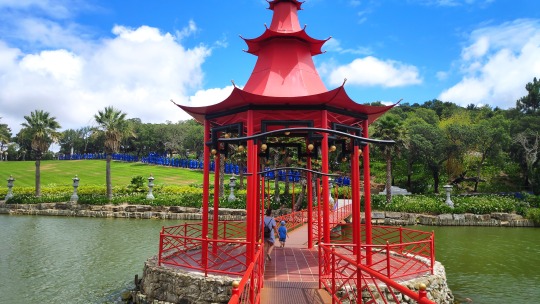
View On WordPress
0 notes
Text
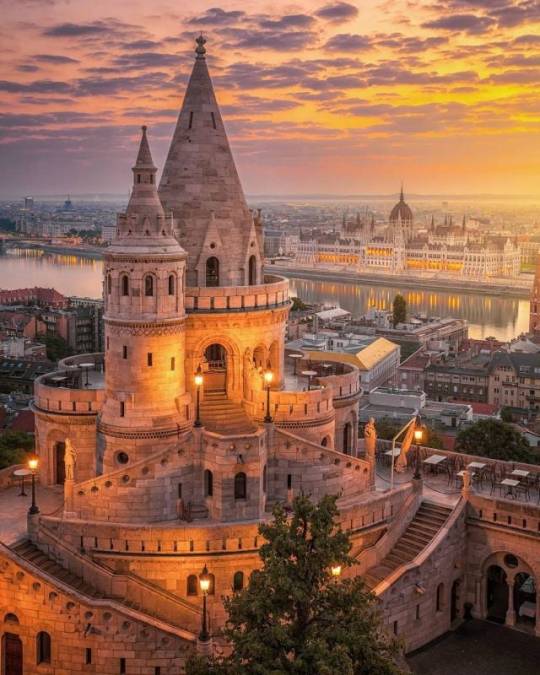
The Halászbástya or Fisherman's Bastion is one of the best known monuments in Budapest, located near the Buda Castle, in the 1st district of Budapest. It is one of the most important tourist attractions due to the unique panorama of Budapest from the Neo-Romanesque lookout terraces.
1 note
·
View note
Text
Budapest

Today, let's explore the UNESCO World Heritage Site of Budapest, Hungary, where history, architecture, and the breathtaking Danube River come together in a symphony of timeless beauty.
Budapest, often referred to as the "Paris of the East," is a city that captivates with its elegance and grandeur. Its UNESCO World Heritage status, granted in 1987, celebrates the unique blend of architectural styles that grace both sides of the Danube River.
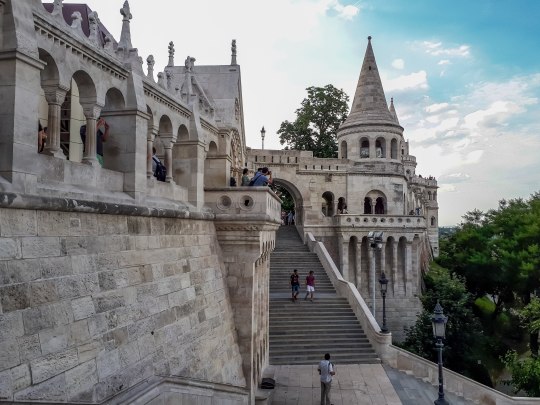
The Buda Castle Quarter, perched on the Buda side of the river, is a treasure trove of historical and architectural wonders. The Buda Castle itself, Matthias Church, and Fisherman's Bastion offer panoramic views of the city.
For panoramic views of Budapest, head to Gellért Hill and the Citadel. The Liberty Statue stands proudly atop the hill, offering a stunning backdrop to the city below.
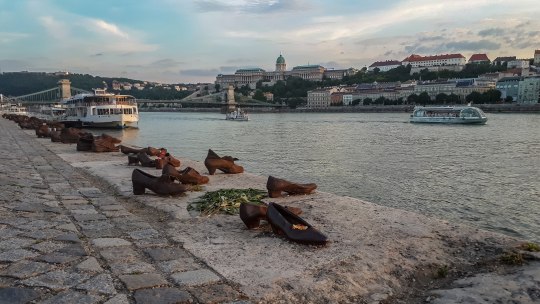
The iconic Chain Bridge, connecting Buda and Pest, is a symbol of Budapest's unity. The Danube embankments on both sides showcase an array of architectural styles, creating a picturesque panorama along the riverbanks.
Budapest is renowned for its thermal baths, including the iconic Széchenyi and Gellért Baths. These architectural gems not only offer relaxation but also reflect the city's appreciation for wellness and leisure.

Andrassy Avenue, a majestic boulevard, leads to Heroes' Square, a monumental public space adorned with statues commemorating Hungarian leaders. It's a testament to the nation's history and struggle for independence.
Today, Budapest is a cultural hub that hosts events, festivals, and concerts, celebrating the rich heritage of the region and the enduring charm of its architecture.
In conclusion, Budapest is a symphony of heritage along the Danube, where the past harmonizes with the present. As a UNESCO World Heritage Site, it invites us to appreciate the profound historical and architectural significance of a city that stands as a testament to Hungarian identity. When you're ready to explore a world where history, culture, and the river's embrace converge, Budapest promises to inspire and captivate. 🏰🌉🎶
0 notes
Text
FISHERMAN BASTION OVERLOOKING THE DANUBE, BUDAPEST HUNGARY.

Above: Fisherman Bastion is also known as the Hal·szb·stya.
Welcome back. I’ve been revisiting photographs I captured on my travels, including Hungary. In an earlier post I shared another photograph from the same period, DOCKED CANOES IN THE HUNGARIAN COUNTRYSIDE.
THE PHOTOGRAPH.
FISHERMAN BASTION OVERLOOKING THE DANUBE, from 2003, was captured with a Nikon E5000 camera. An early model digital camera; it had a 5 megapixel sensor. By today's standards this is very small. I don't believe one can even purchase a new 5 megapixel anymore. As technology and my post production techniques improved over the years I've revisited my photographs of Hungary a couple of times. Subtle but beautiful changes in FISHERMAN BASTION OVERLOOKING THE DANUBE include the replacement of the sky and the addition of water blur. The image was captured through a glass window which helped create the red fringe / vignette on the bottom left side of the photograph. I chose to leave it because it sparks my memory.
HISTORY OF THE HAL·SZB·STYA.
The Hal·szb·stya is one of the best known monuments in Budapest. A fascinating attraction is its architecture and panoramic view of Budapest. Hungary as a whole has a remarkable history going back to the 9th century. It's reflected within its walls and architecture.
The original walls of the Fisherman Bastion were built in the 1700s, forming part of the walls of a castle. Historians note that in the Middle Ages this section of castle walls was protected by the guild of fishermen (halász), who lived under the walls in the so-called Fishtown or Watertown. The current structure was built between 1895 and 1902 by architect Frigyes Schulek, on a stretch of the Buda Castle wall's base. Between 1947-48, the son of Frigyes Schulek, J·nos Schulek, completed a restoration of the Matthias Church after its near destruction during World War II.
ORDER FINE ART PRINTS OF THIS PHOTOGRAPH.
FISHERMAN BASTION OVERLOOKING THE DANUBE is available with a gorgeous selection of photographic media to choose from.
The studio recently installed a 12 ink printer capable of creating large (and small) custom fine-art prints. Custom print profiles and professional-grade photographic papers allow me to create pieces of art for you.
Order via DEANOROSPHOTO.COM or CONTACT ME. I’ll ensure you’re ordering exactly what you want.
SEE MORE DEAN OROS PHOTOGRAPHY.
DEANOROSPHOTO.COM | INSTAGRAM | FACEBOOK | TWITTER
My photography is available as printed artwork in a variety of sizes and wall art options. I also accept private commissions. Feel free to inquire anytime.
artistry + documentary
See you next time.
0 notes
Text
Buda Castle District & Night Cruise on the Danube River - Budapest, Hungary
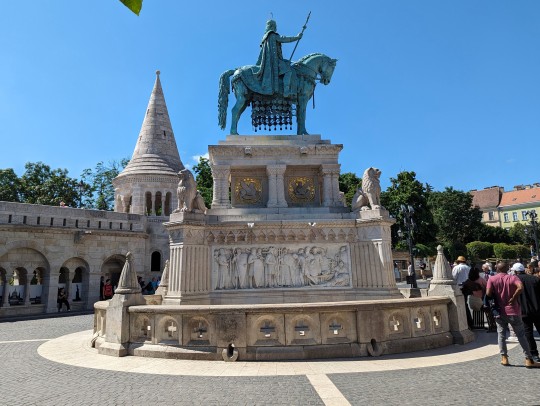
We started the day off by climbing up the hill to the Fisherman’s Bastion in the Castle District. It was a steep set of stairs and ramps, but we quickly forgot all of that when we reached the top. The plaza is expansive and the views are amazing! Pictured above is the statue of St Stephen and pictured below are the spires of Fisherman’s Bastion.

We had a lovely, partly cloudy day for our photos from the Castle District. Pictured below is the view looking toward Margrit Island and the Parliament Building.
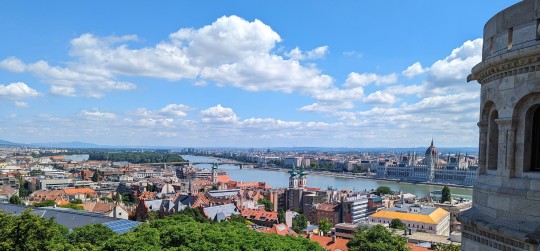
There is a lot to see in the Castle District and it is a HUGE tourist destination. We had to be patient with the crowds and waiting our turn to take pictures - we are a bit exhausted by all of the “posing” that seems to be required when people are taking their pictures!
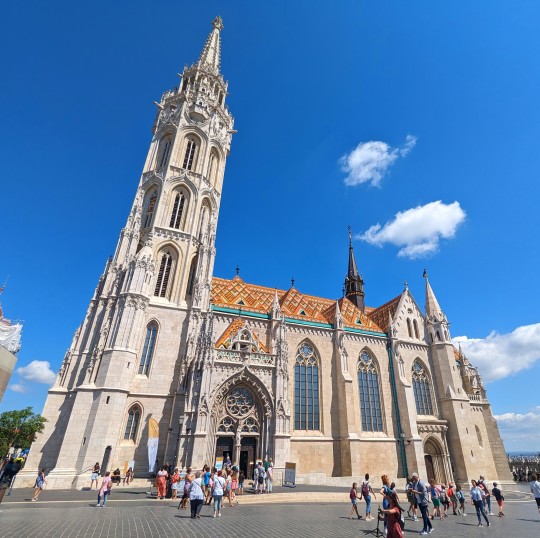
Matthias Church with its beautiful tiled roof - it dominates the square it is located in.

The Holy Trinity Column Statue built to commemorate the people of Buda who died from the Black Plague.

Church of St. Mary Magdalene tower and remains, the church was built between the 13th and 15th centuries.

National Archives of Hungary, another beautifully tiled roof - the picture does not do it justice.
Our journey through the Castle District continued along the northern perimeter. We stayed up on the terraced portion, which was away from the crowds on the plaza and provided us with great views of the surrounding areas. There were several statues and monuments on the terrace, as well as safety warnings!

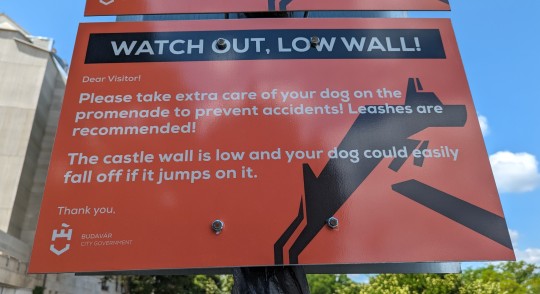
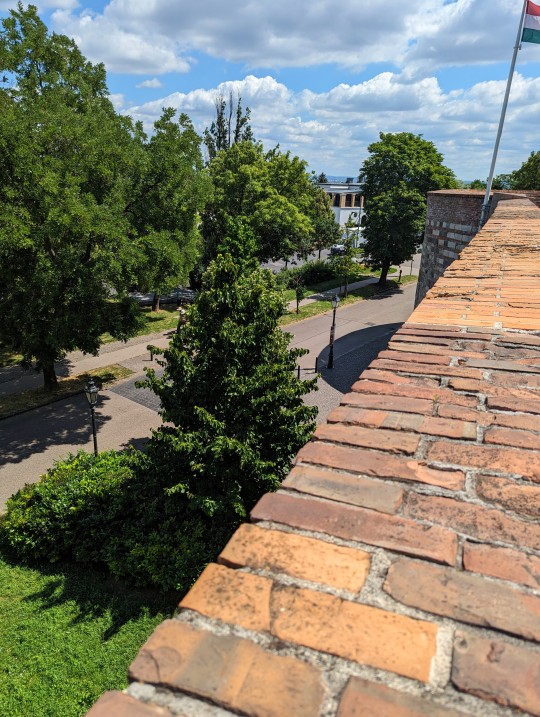
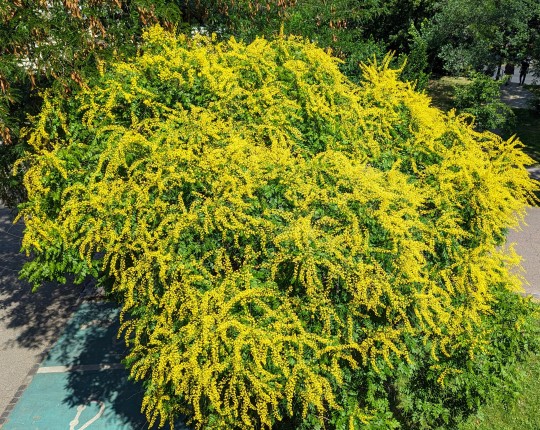

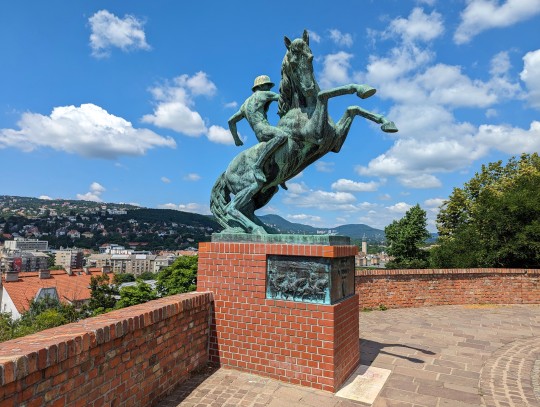
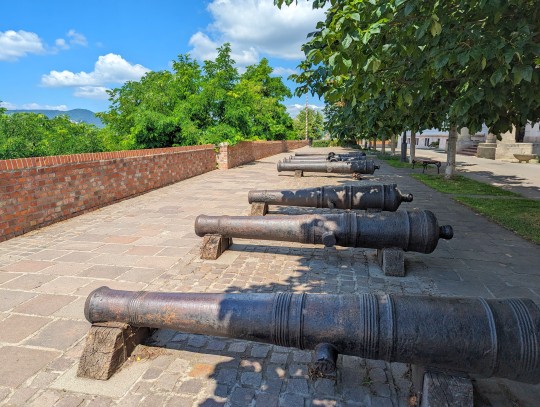
After a lovely walk on the terrace, we rejoined the crowds at the plaza next to the Buda Castle. We made our way to the overlook and managed to get a spot to take in the views. Spectacular!
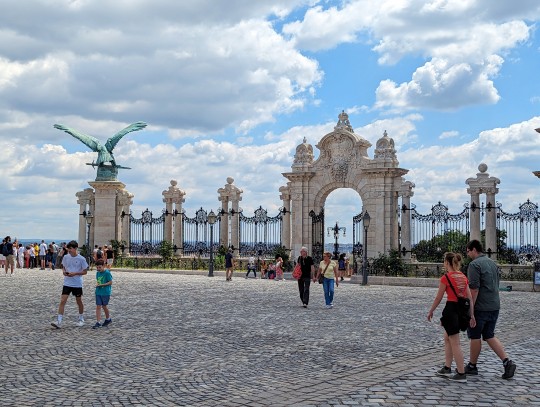
Gates to the Buda Castle plaza.

Statue of Turul, Hungary’s mythical bird that “ravaged the grandmother of Arpad and impregnated her, thus establishing the Turul as the progenitor of Hungary’s first reigning dynasty”. You can thank Cityseeker for that description!!

Danube River, Margit Island Bridge, and Parliament Building from the Castle District.

The famous Chain Bridge on the Danube River.
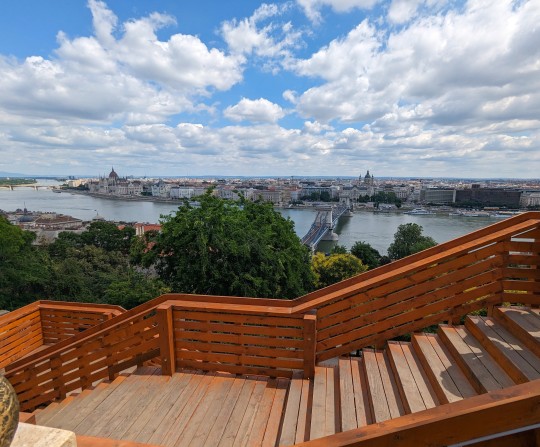
I am posting this picture because I love the sky in it and the panoramic view.
The Buda Castle is a ginormous complex, we wandered around for at least an hour without going inside of the castle. Inside the castle are several museums and displays, we opted not to enter any of them. It is free to wander around the grounds, each museum/entrance to the building required a fee.
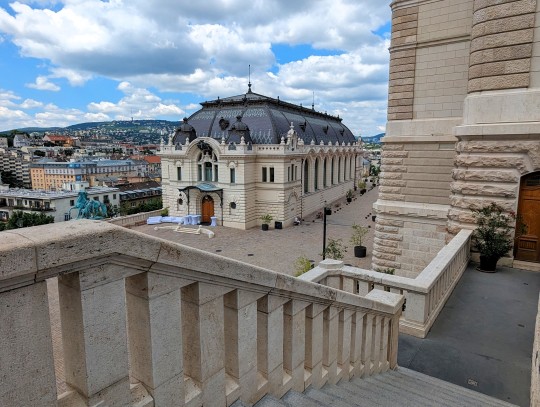
The Royal Riding Hall, which is located in the Csikos courtyard.
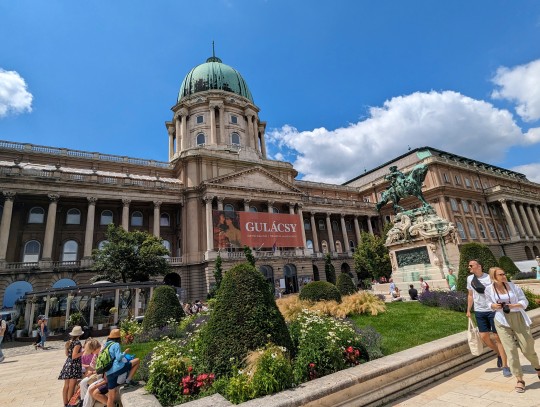
A shot of the front of the Buda Castle, just a small section of the entire complex. There is a museum located in this portion of the castle.

Statue of Prince Eugene of Savoy.
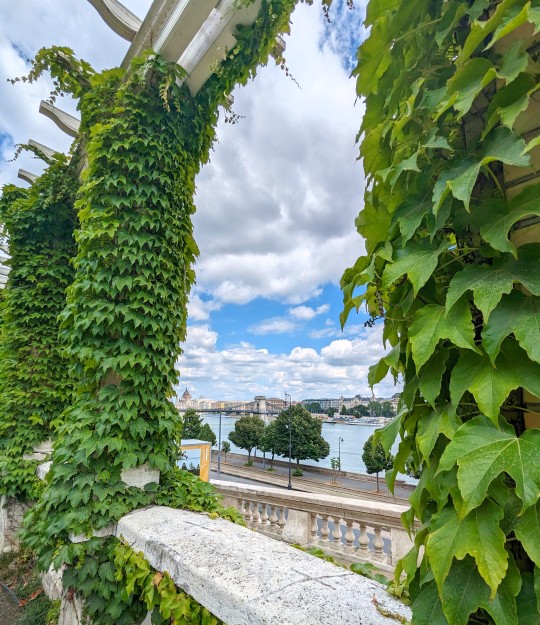
A view through the ivy-covered trellis along the steps, as we descended from the Castle District down to the promenade.

Cave Church, located along the promenade on the Buda side of the river.
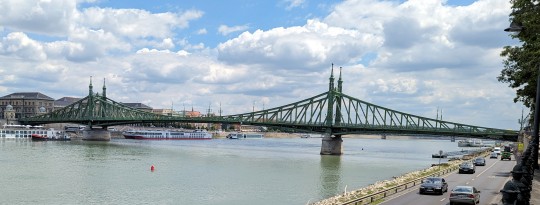
Szabadsag hid or Liberty Bridge, it spans the Danube River at the southern end of the City Centre.
We crossed the bridge to reach the Central Market Hall. We had hoped to find a place to eat lunch there, but we didn’t find anything that really appealed and it was extremely crowded - not really a place to sit down to eat. We enjoyed walking through the market and checking out all the different displays. Lots of paprika, alcohol, and pretty vegetables to look at!



We then wandered north from the market and found a tiny little cafe and had ourselves a little hummus and veggies for lunch, loved this sign from the cafe:

After lunch, we went back to our Airbnb and rested for a bit - we had a night cruise on the Danube scheduled in the evening, which didn’t start until 8:45!!
Our river cruise started from Dock 11 on the Pest side of the Danube. We cruised downriver first, passing the Liberty Bridge and all of the people lined up on it to view the sunset (pictured below).

Liberty Bridge lined with sunset watchers.

The Whale - a shopping and cultural center on the Pest side of the river.
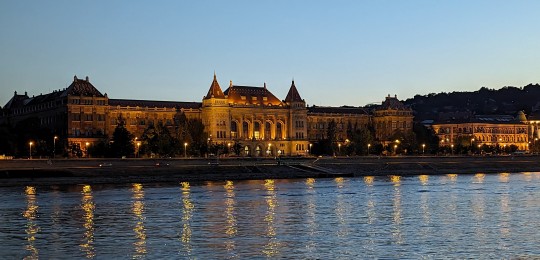
Budapest University of Technology and Economics on the Buda side of the river.

Liberty Bridge and the Liberty Statue on Citadel Hill.

Buda Castle (above and below, because I couldn’t choose which picture I liked the best).


Matthias Church and Fisherman’s Bastion.

Chain Bridge, lit up with the colors of the Hungarian flag.
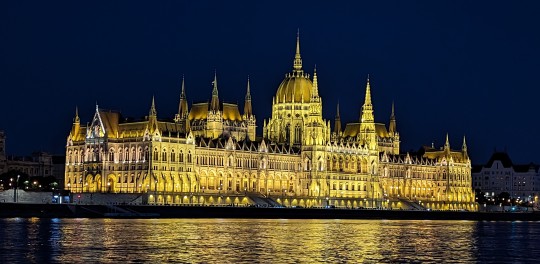
The Parliament Building, as we approached.

The Parliament Building, a sparkling jewel - the perfect end to a lovely cruise on the Danube.
0 notes
Text
Budapest transforms into a vibrant F1 city
Budapest transforms into a vibrant F1 city
By Balazs Szabo on 20 Jul 2023, 19:41
Formula One has arrived at the Hungaroring and preparation have gearing up for tomorrow’s practice day. F1Technical’s senior writer Balázs Szabó reports from his home race.
Hungaroring has established itself as a fixture on the F1 calendar, having stages an F1 round every year since 1986. The 4.3km track is known for its stop-and-go nature, featuring a series of short straights and slow- and medium-speed corners. The circuit that is built into a natural bowl is located around 24km away from the eye-catching Budapest.
The Hungarian capital is a truly amazing city that offers a lot to discover. Visitor usually search for a stroll on the attractice promenade that lies on the banks of the Danube River. However, with F1 having arrived in Budapest, the city offers sights and attractions that are only this week there to discover.
At the newly renovated Nyugati Railway Station, the Silverstone-based Aston Martin team set up a striking motorhome. Presented by the British team’s partner Peroni, fans can get close to an Aston Martin F1 car and they can sit on a pit wall to experience how it feels to work as a race engineer, team principal or team manager during a race weekend.
The special setup called Il Pitstop can be visited in front of the Westend Shopping Centre between 12pm-8pm each day this week.
Elsewhere, AlphaTauri’s partner Orlen has recently built a new petrol station on the outskirts of Budapest. It is situated near the Hungaroring, in between the towns of Mogyoród and Gödöllő. Although the Polish oil refiner and petrol retailer is not a technical partner of the Faenza-based outfit, they have organized activities on multiple occasions since they joined forced earlier this year.
Ahead of the Hungarian Grand Prix, Orlen offered tickets through a competitions organized by a Hungarian radio station. They have now put an AlphaTauri AT02 in front of the new Orlen petrol station which fans can visit during the Hungaroring race week.
Among the main places to see in Budapest are the Chain Bridge, the Buda Castle, the Parliament, and the Opera House. Another must-see sight is the Heroes Square which is now decorated with an iconic F1 sign. Although the F1 schedule for the Hungarian Grand Prix is tightly packed, it is worth finding a slot during the weekend to visit the square that is noted for its iconic Millennium Monument with statues featuring the Seven chieftains of the Magyars and other important Hungarian national leaders.
via F1Technical.net . Motorsport news https://www.f1technical.net/news/
0 notes
Text
Arte en Extremo Oriente
MANIFESTACIONES ARTÍSTICAS
India:
Siddaharta Gautama: 563 - 483 a.C. Buda. Fue la manifestación más importante.

Trogloditas: monumentos excavados en roca.
Monolítica: era una roca tallada por dentro y por fuera
Palacios, pagodas y gopurán: eran capillas que se usaban para fechas importantes.
China:
Se implementaba la madera, el bambú, el ladrillo vidriado y en raras ocasiones la piedra.
Tejados "Ting": tiene extremos envueltos hacia arriba.

Taa o torre-pagoda: formada por cuerpos cilíndricos o poligonales con aleros.
Peleu o pai-lu: era un arco triunfal o puerta monumental de tipo arquitrabado.
Porcelana: era empleada en vajillas y en torres de la ciudad.
Pintura: se realiza sobre seda y bajo la técnica de "aguada", además los temas fueron en la naturaleza.
Japón:
Su arte refleja la filosofía religiosa.
La arquitectura fue elaborada con madera
Escultura: era hecha de bronce, piedra y marfil
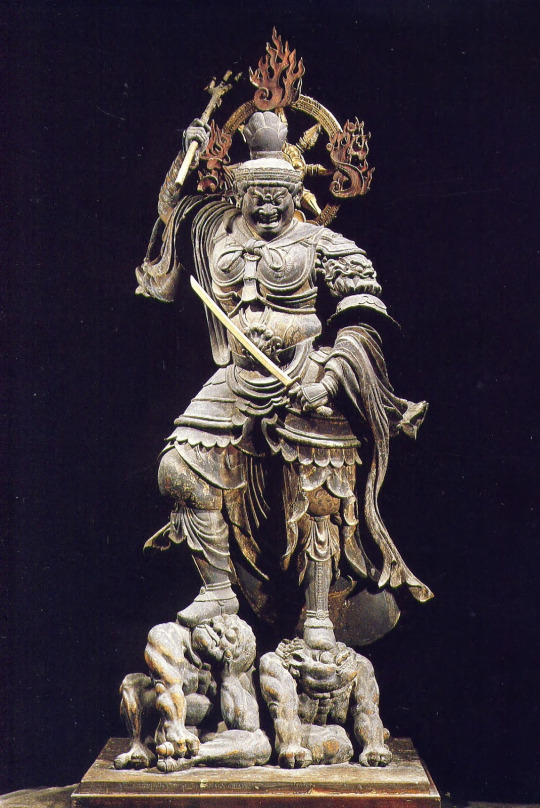
La técnica de pintura más utilizada era la aguada y tenía fines decorativo.
Kakemonos: eran bandas adheridas a dos listones que decoran las paredes y eran hechas de papel o seda.

Surimonos: eran tarjetas de gran tamaño grabadas y decoradas para conmemorar fechas familiares o celebrar el año.

-Day
0 notes
Photo

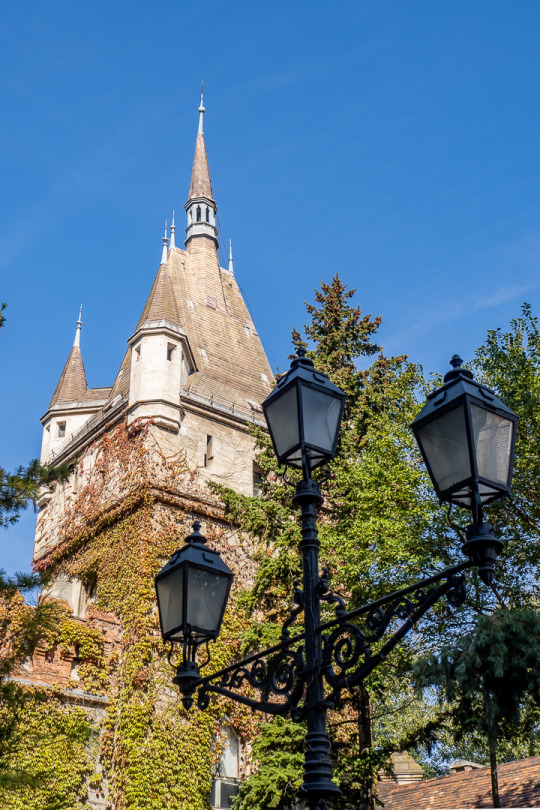
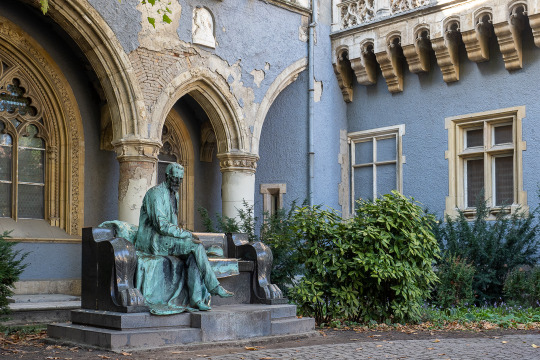
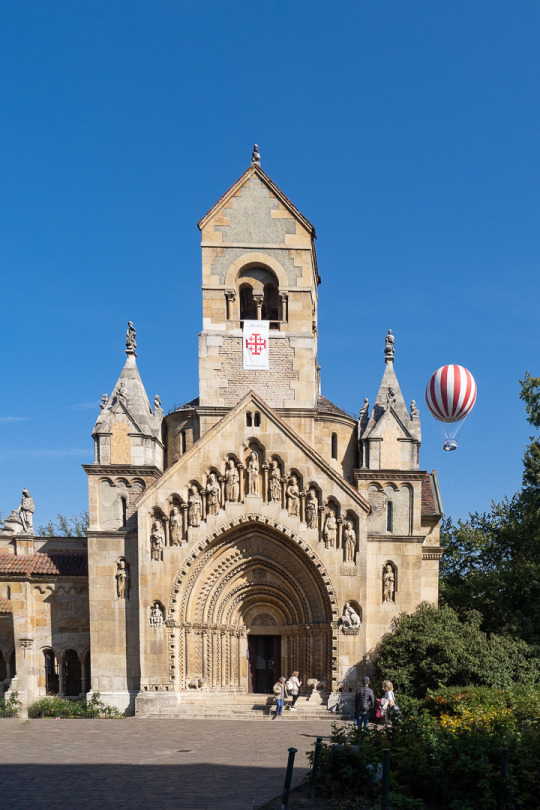



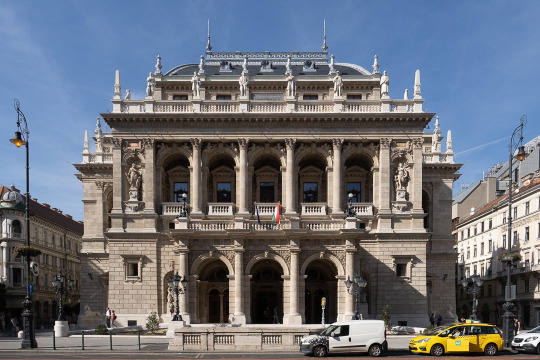


Le matin je travaille encore un peu sur mes photos de Vienne. Éditer les photos, tenir le blog, mettre à jour le brouillon du carnet de voyage et enfin tenir tant bien que mal le retard au minimum de mon carnet de dessin 365 (jours) est un calvaire. J’ai du mal à tout maintenir à jour et je me demande parfois si chacun rempli encore sa fonction première.
En début d’après midi je décolle pour un parc à proximité qui apparait sur Google Maps, ce dernier est très grand. Alors que je lève la tête, j’aperçois une montgolfière. L’idée est alléchante pour un coucher de soleil surtout que nous sommes en plein Pest (Rappelez vous dans Budapest il y a deux parties Buda et Pest).
Au gré de ma balade, je tombe sur un ancien château reconverti en musée de l’agriculture. Il y a des statues d’homme illustres dont les gens semblent friands de faire les pitres dessus. Une des statues tend les bras par exemple et une femme est allonger entre ceux-ci. Parfois ils se contentent de s’assoir à côté.
Un vieux bâtiment au loin assez imposant attire mon attention. Ce sont des bains publiques, mais je reviendrai dessus plus tard.
Je poursuis en arrivant sur une imposante place où se trouve le monument du millénaire. J’en profite pour faire un essai mi photo et vidéo que j’assemblerai plus tard. Je me rapproche du centre en métro avant de continuer à vagabonder de le vieux centre de Pest.
0 notes
Text

Sep 23: walked from the ship across the Green Bridge to the Buda side of the city and then along the Danube and up a funicular to the Castle on the hill, first built in 1255 and then rebuilt multiples times after wars. The castle grounds are sprawling with gardens, statues, the Presidential Palace, St Matthias Church and a monument to fishermen.
0 notes
Text
Top Places To Travel In Europe
As the days get shorter, we start to think about snow, starry nights, and a cup of cocoa. Winter is an exciting time to visit Europe because there are so many beautiful destinations that you can choose from!
Europe is renowned for its rich history, cultural diversity, and natural beauty. This winter, as the holiday season approaches, let’s explore some of the lesser-known destinations in Europe that will make your trip magical.
In this blog post, we’ve compiled 5 of our favorite European winter destinations. From quaint towns with cobblestone streets to snowy mountains and bustling cities – see them all here!
Find best Europe destinations to travel from HERE
Prague
1. Winter Magic
One of our favorite things about living in Europe is how magical it can feel in December-January. The festive lighting, streetside markets, and lightly snowing skies make Prague magical. Prague is an excellent choice if you’re feeling the need for a break from the stressful holiday season back home or simply want to take in Christmas festivities somewhere different (and colder!).
2. Holiday Lights
Prague does light displays as well as any city. Every evening, the Charles Bridge is lit with spotlight towers and floodlights. The lights are added to the bridge in 2005 for its 675th anniversary, and while there are supposed to be 4 towers, one of them has been broken since 2008. Nearby along the riverbank under a pedestrian bridge (Dům pod Ralskem) is an ice sculpture show, and a Christmas tree stands at the end of the bridge. The nearby medieval OldTown Square features 1800 lightbulbs that illuminate its iconic Týn Church every evening.
There are many opportunities if you’d like to take pictures of monuments and buildings! Prague has many Christmas markets, and they’re all gorgeous in snowy weather. But the real treat is to get outside the city center!
3. Snowy Fields (and Beaches)
Less than an hour from Prague by public transportation is a winter wonderland: Zlatý Kopec, which means “Golden Hill.” This popular ski resort features a year-round resort, alpine snowboarding center, and spa.
The Golden Hill is topped with large ski jumps that are illuminated at night. There’s also an ice rink and several family/adventure parks. On the hill itself, there are sledding opportunities. If you visit in early December, the ski jump towers are covered with large snow sculptures.
There’s also a nearby beach on the river! It is impossible to get down to it due to very high winds and lots of snow, but several small sand beaches are around that area. You’ll have to drive or take public transportation if you want to explore the beach!
Prague is a unique addition to your winter vacation, and we would highly recommend it.
Budapest
Budapest is an exceptional city to visit at any time of the year, but when snowflakes start to fall on the spires of its neoclassical buildings, it’s all we can do not to book a flight. With temperatures low but spirits high and holiday shopping adrenaline running through the streets alongside frost-coated cobblestones, there’s no better time to visit Budapest than in winter.
Budapest is a city covered in snow for nearly half of the year, but its beauty doesn’t diminish with each white flake that falls from the sky. The best way to enjoy this stunning city during the colder months is to grab a pair of sturdy boots and start exploring the many wonders it has to offer. Here are some ways you can make the most out of your time in Budapest during winter:
1) If white snow and blue skies aren’t your thing, head to the thermal baths at the Hotel Gellért to find a steaming pool that’s overlooking Budapest. Cruise across the city from Buda in style on a vintage streetcar or get lost in St Stephen’s Basilica (which was built between 1905 and 1915). And don’t worry if the weather takes a turn for the worse while you’re looking around! Budapest’s public transportation means that you can explore any corner of the city without worrying about getting lost.
2) The Buda Castle Quarter While sipping a warm coffee at Cafe Gerbeaud, one of Hungary’s most beloved cafes, take in some sightseeing in the Buda Castle quarter. The UNESCO-protected hilltop neighborhood offers a wide variety of entertainment with places like the Museum of Military History, Andrássy Avenue (the most expensive street in Europe), and Budapest’s largest synagogue all within close range.
3) The Markets at Liberty Bridge and Vamhazka During the “fourteen days of Christmas,” Budapest comes to life with lights, trees, and markets. Walk around Vamhazka Market to find local foods like apple strudel and palacsinta (crepe) while taking in the sights of the city below. Stroll across Liberty Bridge during the day or at night for a stunning look at the Hungarian Parliament Building.
Munich
The winter of 2021 is coming, and you might be looking for inspiration on where to spend it? Don’t worry – we got a few of them! Today, Munich is getting a shout-out.
Munich is a city in Bavaria, Germany. It is located in the southeast region of Germany. It is home to more than 1 million people. It is a major city and economic center of Germany. Munich is known for its culture, art, architecture, history, and sports events. The airport provides flights around the world.
Besides winter sports enthusiasts, tourists are also attracted by Gothic architecture and culture. Munich is also the home to some famous museums, including a very breathtaking one at king Ludwig’s palace. It is called the Alte (Old) Pinakothek and provides visitors an introduction to medieval art from late gothic to early baroque times.
If you like to shop, Munich has lots of shops for you to choose from as well.
Several stores specialize in clothes and shoes. You can also find stores that sell jewelry and other little trinkets such as figurines, etc.
Several sports events take place in Munich every year.
Soccer is very popular, though they also have a huge fan base for ice hockey. Many people in the city support the two major teams that play there: “Bayern” and “Munchen.” If you decide to go there, you will notice everyone wearing the teams’ colors. All the fans gather around town to show support for their team and watch them play.
Munich is a great place to go in Germany if you want something a little different.
The town has lots of places for the younger people who just want to have fun. Everyone around the town will welcome you with open arms. The people are very nice and friendly, so don’t be afraid to say hello to strangers. You can find information about visiting Munich by going on the internet or calling a travel agent who is familiar with this area of Germany.
Copenhagen
Copenhagen is the largest city in Denmark, with an urban population of 1,200,000 citizens and a metropolitan area with a population of 2.2 million people.
Copenhagen is a Danish city situated on the island of Zealand (Sjælland) and separated from the German capital city Berlin by the strait of Øresund. It belongs to Denmark’s Capital Region and is surrounded by suburban municipalities forming Greater Copenhagen, which also contains Sophia Amalie municipality with its main town called Frederiksberg.
1. The first thing that you should definitely not miss when you’re in Copenhagen is the Winter City Tour offered by Copenhagen Winter Tours.
You get to visit Tivoli, the Freetown Christiania and Nyhavn. The tour starts at 3 pm daily for 2 hours.Cost: 200 Kr (Rs 1,725)
2. Take a walk along the strand in Copenhagen. It’s a good idea after having something warm to eat because you can walk along the beach as well.
There are lots of stalls selling hot chocolate (Glogg) which is a favorite drink in winter in Denmark and it’s very yummy! The best place to get glogg is Nyhavn.
You could also try “Pølse” or hot dogs from the stalls there. Another thing that you should try is “Copenhagen Street Food” in Copenhagen which is located near the beautiful Tivoli Garden. They make a variety of food from different parts of the world, like Thai, Italian, Mexican, and Indian, etc. All their food is best-sellers! The cost of the meal for two people would be around 300-400 Kr (Rs 2,500 – 3,600).
3. You can go to the Copenhagen Christmas Market which is located in front of the Central Station. It’s a place where you get all kinds of delicacies like mulled wine, grilled hot dogs, and sausages made of different kinds of meat. The best part about this market is that you get to enjoy the entertainment (like puppet shows, acrobats, and face painters) as well.
4. Another famous thing to do in Copenhagen in winter is going out on a boat tour of the beautiful harbor city of Copenhagen. The boat offers you guided tours as well.
Stockholm
Stockholm is the capital and largest city of Sweden. It has a population of 871,015 in the municipality, 1.4 million in the urban area, and 2.2 million in the metropolitan area (1999).
Its old town harbors medieval buildings, charming cafes, museums, and entertainment venues. There are several activities to experience in Sweden’s capital during the winter season. Here are some ideas you need not miss out visiting while being in Stockholm this winter:
1. Nightlife
Stockholm is home to a lively nightlife scene. You may go clubbing in the city’s most popular nightclubs or simply enjoy a drink at one of its cozy pubs and bars. But if you’re looking for something more intimate, take that special someone with you on a sleigh ride from Riddarholmen to the island of Djurgården. The city also boasts one of the most famous ski slopes – the Snow Park, which is located in Saltsjöbaden and open to winter sports enthusiasts all year round.
2. Shopping
Stockholm is a shopper’s paradise. You can go for window-shopping or splurge on high-end brands. Swedish and international fashion brands have their branches in the city’s shopping districts, as well as local boutiques like DesignTorget. If you’re interested to buy something unique, head over to either Hötorget or Östermalmstorg – two of Stockholm’s biggest squares which are located just steps away from each other. Antiques, jewelry, and art items are some of the things you can find in these two places – perfect souvenirs for your family and friends back home.
3. Art Scene
A stroll through Stockholm will give you a chance to see works by great Swedish artists like Carl Milles at Skansen Open-Air Museum, and August Strindberg at the Nobel Museum. The city is also home to numerous local art galleries like Bergsjö Art Gallery, Galleri Lilja Bengtsson Fine Art, Henning Koppel Gallery, and Lars Bohman Gallery that showcase contemporary works by some of Sweden’s most creative artists.
If you’re looking for a winter vacation destination this year, check out our list of the 5 best European destinations! Whether you want to be swept away by culture or enjoy some of the world’s most beautiful natural scenery – we’ve got it all. And don’t forget to bring your coat and scarf if you plan on visiting any of these fantastic places during the long winter months! Which one are you most excited about? Let us know in the comments below.
We have a network of wanderers and explorers who are always thrilled to share their informative and interactive travelling experiences. Get an insight into their most adventurous and exciting travelling experiences through our platform. Stay updated on everything from the world of travelling with us.
We’ve already been where you want to go, and we can tell you what is it like because we’re travel specialists, not generalists.
For travel tips and reviews visit: https://reviewshoney.com/
0 notes